#bees habitat
Explore tagged Tumblr posts
Text
Raising awareness of bees' contributions to environmental and social resilience.
“World Bee Day has contributed significantly to raising awareness of the importance of bees and other pollinators and to promoting international cooperation to protect them,” said Nataša Pirc Musar, President of the Republic of Slovenia.
Her country initiated the establishment of a World Bee Day in 2016 at an FAO regional conference for Europe and co-created more than 300 pollinator projects with partners on all continents, she said.
For its part, the United Nations marked World Bee Day 2023 with an FAO-hosted global ceremony emphasizing the importance of these hard-working pollinators.
Under the theme of pollinator-friendly agricultural production, the event drew attention to the threats endangering these insects and the need to address them.
On Monday, an event at United Nations Headquarters will showcase best practices and innovative projects with a view to raising awareness of bees' contributions to environmental and social resilience.
“Protecting bees and other pollinators is essential to guarantee agricultural production, food security, ecosystems restoration, and plant health,” FAO Director-General Qu Dongyu said.
As beekeeper Ms. Moreno Veliz said, “bees are extremely intelligent insects. They are beautiful animals.��
#pollinator projects#Ensuring bee health#Pollinator-friendly practices#bees habitat#protect bees#Agricultural tool and innovation#pollinator
0 notes
Text
Dandelion News - December 1-7
Like these weekly compilations? Tip me at $kaybarr1735 or check out my Dandelion Doodles for 50% off this month!
1. These high-tech windows fight climate change – and will save you money
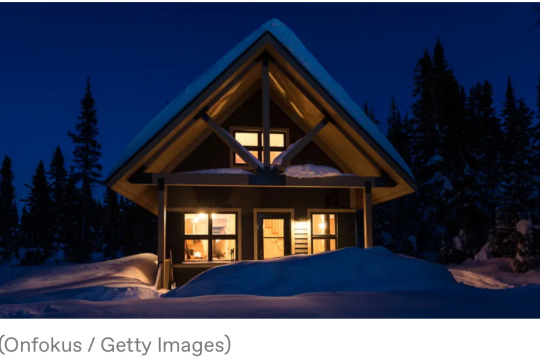
“[“Vacuum-insulated glass”] insulates five times better than double-paned glass. The Enthermal product line holds energy about as well as fiberglass wall insulation[…. T]he energy bill savings offset the upfront cost of the upgrade in two to seven years, depending on the building[….]”
2. Doulas test ways to curb Memphis’ Black maternal, infant deaths

“Research shows they are key to better health outcomes. […] Free of charge, [parents enrolled in this pilot program], in addition to being paired with a doula, get access to free yoga classes, diapers, breastfeeding starter kits, nutritious food and other tangible help that can measurably boost well-being.”
3. Scientists find feeding grazing cattle seaweed cuts methane emissions by almost 40%

“This is the first study to test seaweed on grazing beef cattle in the world. […] Most research to reduce methane emissions using feed additives has taken place in controlled environments with daily supplements. But Kebreab noted in the study that fewer than half of those methods are effective for grazing cattle.”
4. Success for local residents as Florida council toppled over sewage plant plan
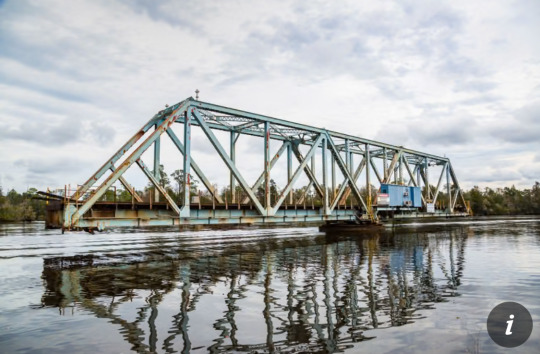
“A citizens’ revolt in a small Florida city ousted an entire slate of councilors who were pushing for a new sewage plant to be built close to one of the state’s most pristine and treasured rivers.”
5. Beaver survey aims to show the urban benefits of Chicago's 'ecosystem engineers'
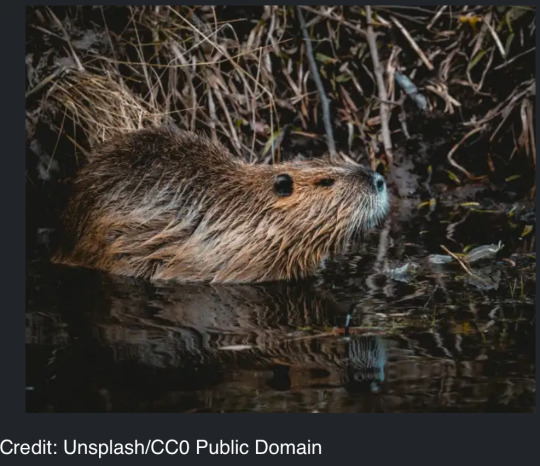
“Urban Rivers is installing [“artificial floating gardens”] along the river to restore native wetland habitats, which provide food and shelter for wildlife, as well as natural spaces for humans.”
6. The future of plastic: Biodegradable, durable, and even edible
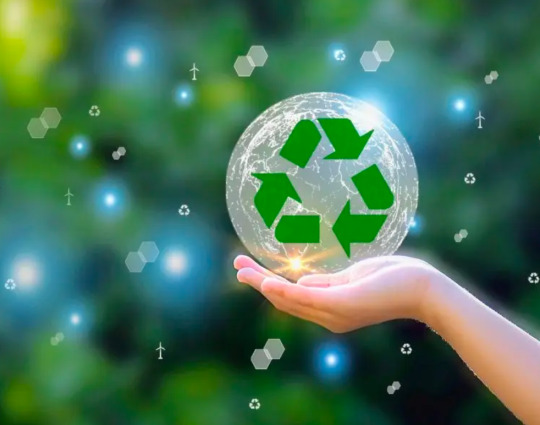
“[… T]he composite plastic proved not only sturdy but also more malleable than its core component, hydroxyethyl cellulose. Additionally, since both cellulose and tyrosine are edible, the biodegradable composite plastic can technically be consumed.”
7. Limestone quarries could be vital for wild bee conservation
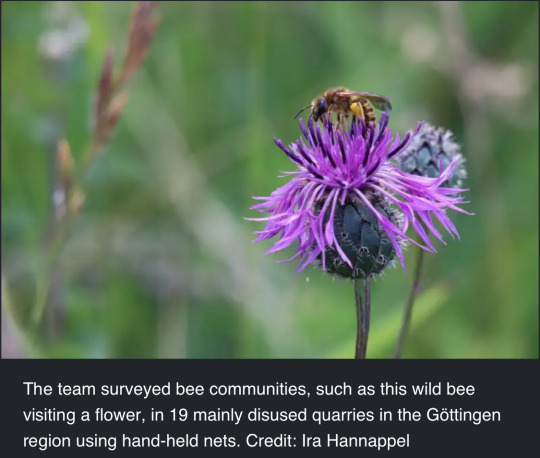
“Quarries provide valuable habitats for wild bees and other animals and plants that occur on the now rare calcareous grasslands," explains lead author Dr. Felix Kirsch[….]”
8. New England wedding vendors offer help to same-sex couples before Trump inauguration

“Marriage equality isn’t immediately at risk. Trump has said he considers it settled law, but of course it’s hard to take him at his word […] so vendors in the region are offering free or discounted services to queer couples and noncitizens in a rush to marry.”
9. The indigenous women saving India's endangered giant yams
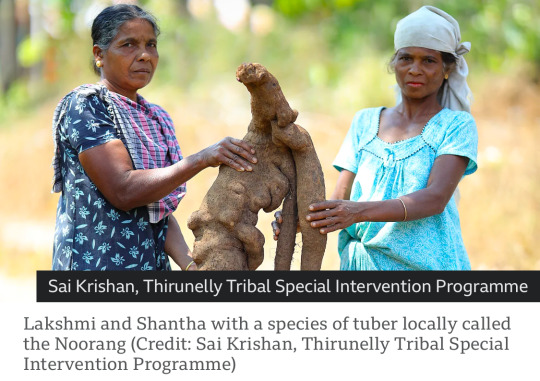
“Since their formation in 2022, the 10 members of the Noorang group have planted and brought back to the community 180 varieties of wild tubers[….] The project is part of [… a] farming initiative to eradicate poverty, provide agricultural training and empower women in vulnerable tribal communities.”
10. The US is making and deploying more solar panels than ever before

“[… D]omestic solar module manufacturing capacity has nearly quintupled since 2022[….] Solar is the cheapest source of new power generation by far, and it’s an increasingly large employer in the U.S., particularly in Republican-led states.”
November 22-28 news here | (all credit for images and written material can be found at the source linked; I don’t claim credit for anything but curating.)
#hopepunk#good news#solar panels#solar energy#solar power#climate change#co2 emissions#cattle#seaweed#india#yams#food insecurity#beaver#habitat#conservation#bees#florida#civic engagement#new england#same sex marriage#gay marriage#marriage#us politics#plastic#science#home improvement#thermal insulation#parenting#perinatal#medicine
65 notes
·
View notes
Text
Seb detailing his biodiversity projects [2024-10-16]
#he literally went: for the 100th time it’s not about fun bees it’s about creating habitats 😤#sebastian vettel#caj!seb#bes24#2024#boo!zip#👻
42 notes
·
View notes
Text
There is a lovely patch of milkweed at work that just bloomed

In the western US sagebrush steppe ecosystem milkweed are one of the top plants associated with insect diversity (sagebrush comes in first, which is unsurprising as the entire ecosystem is named after it)

There has been a huge push in recent years to plant milkweed, as it helps the Monarch Butterfly, but just like other pushes to restore habitat for a specific species, this also helps so many other species.

Three species of bee in one frame! The abundance of species was glorious.

A red-femored milkweed borer beetle

Nevada Bumblebee

A striped sweat bee

A hairy footed scolid wasp

Cobalt milkweed beetle

Unknown bee species

American sand wasp
....and more
Small changes to human spaces can bring about such big results and it gives me such hope.
#milkweed#habitat restoration#botany#flowers#bees#beetles#wasps#insects#biodiversity#butterfly#monarch butterfly#bumblebees
20 notes
·
View notes
Text
did you know that china has two thirds of the world's honey bee species and 20% of all bumblebee diversity. they have one of the most diverse pollinator populations in the world and as a country china produces a lot of the world's honey. what I'm saying is bee keeper wei wuxian is very feasible
#beesible if you will#I'm sure bee diversity was even higher before climate change and habitat destruction as well#but I haven't actually researched the specifics of that#ghost posts#text#wwx
18 notes
·
View notes
Text

I made it to the post office to pick up my packages, and look what arrived! The first batch of paperbacks of Butterflies, Bees, Birds, and Bats: A Quick Introduction to Pollinators! You can pick up a paperback for $6 plus shipping at https://rebeccalexa.com/pollinators/, and if you want the ebook for free, join my monthly email newsletter at https://rebeccalexa.com/news-updates/
(Reblogs okay and encouraged - thank you! Also thank you for the reminder about the image ID. I'm pretty good at remembering it in my longer posts, but I sometime forget for these little one-offs.)
#pollinators#insects#invertebrates#save the bees#conservation#environment#habitat restoration#native plants#butterflies#bees#birds#bats#wildlife#animals#nature#chapbooks#free ebooks
79 notes
·
View notes
Text
i just referred, out loud, to applying for a non-theatre job as "auditioning" and. i think there might be something wrong with me
#bee posts nonsense#i am being taken out of my natural habitat (theatre) and being forcibly introduced to a foreign ecosystem (other jobs)#im going to become an invasive species at this rate#theatre
32 notes
·
View notes
Text
Can you spot the native bumblebee on my hairy penstemon (penstemon hirsutus)?
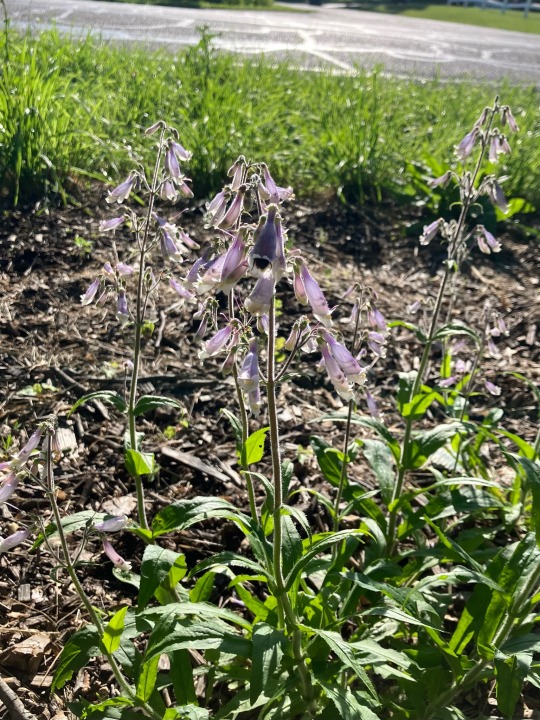
Native plants like penstemons are vital for supporting native pollinators like bumblebees.
#gardening#solarpunk#save the bees#native plants#pollinator garden#the habitat ring#don’t be a petaq grow native plants
7 notes
·
View notes
Text
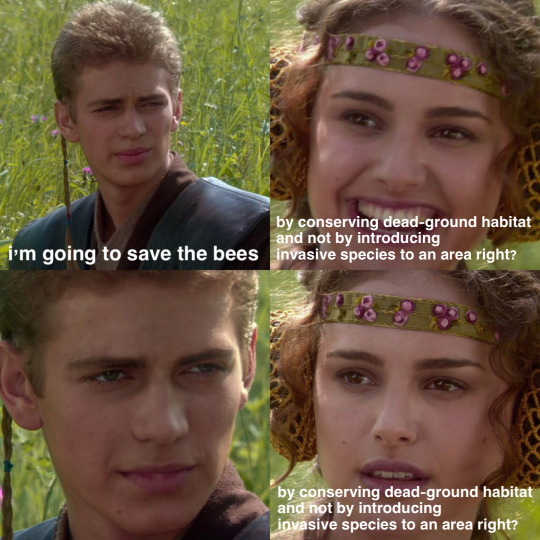
every time someone in north america says they want to save the bees and then they put a honeybee hive in their yard and/or “revamp” their brush pile or bare ground spot by planting flowers i cry. okay i’m done bee posting for now
#the flowers are nice but the limiting factor for native bees tends to be lack of nesting habitat so don’t take that away! replace grass tho#bees#finally posting abt the stuff i actually study
10 notes
·
View notes
Text
unfortunately spiders are a pretty popular part of traditional gnomish cuisine
#gnomes have domesticated giant spiders for silk production#spiders lay dozens or hundreds of eggs depending on the species-- in nature this is to account for things like#sibling cannibalism and just the general extreme mortality rate of small vulnerable invertebrates#but the point is they lay way way more eggs than are ever meant to become adult spiders#so. spider eggs and the first several instars of domestic giant spiders are for eating#gnomes' diet is partly insectivorous in general anyway because of their size and habitat#but spiders are up there with bees as arthropods specifically raised for agriculture as opposed to those collected in the wild#like how silkworms are a popular snack for elves in certain regions 😌#gnome stuff#worldbuilding
14 notes
·
View notes
Text


mwah ha ha it's all coming together....... >:3
#HABITAT! my pond garden plants.....#water mint just started flowering and you know a bajillion varieties of bee love the teasels!!!#it's gonna be weird next year without them...... (they bloom every other year)#OH UNLESS one has seeded such that they will appear then too! as i wasn't expecting this years' either!
4 notes
·
View notes
Text
Pollinator-friendly practices include crop rotation and diversity, reducing the use of pesticides, and restoring and protecting their habitat.

Ensuring bee health is a goal of the United Nations food agency, especially in light of threats against them, including unsustainable agriculture, pesticide abuse, and intensive monoculture production.
Pollination is essential for the maintenance of plant biodiversity, the survival of the world’s ecosystems, with about 75 percent of crops – which produce fruits and other seeds for human consumption – depending, at least in part, on pollinators, including bees, FAO said.
Pollinator-friendly practices include crop rotation and diversity, reducing the use of pesticides, and restoring and protecting their habitat. Even the adoption of precision agriculture tools and innovation can protect bees, the agency said.
To help to better protect the pollinators, the agency hosted and co-organized on Thursday the second International Symposium on Biosecurity in Beekeeping, bringing participants up to date on the latest developments in bee biosecurity and the initiatives that the international organizations involved are applying in different areas of the world to ensure bee health.
#Ensuring bee health#Pollinator-friendly practices#bees habitat#protect bees#Agricultural tool and innovation#pollinators#bees#bee biosecurity#BEEKEEPERS#Bee biosecurity
0 notes
Text
Dandelion News - October 22-28
Like these weekly compilations? Tip me at $kaybarr1735 or check out my Dandelion Doodles on Patreon!
1. Industrial wastelands to wildlife oases: Five nature wins that have actually worked
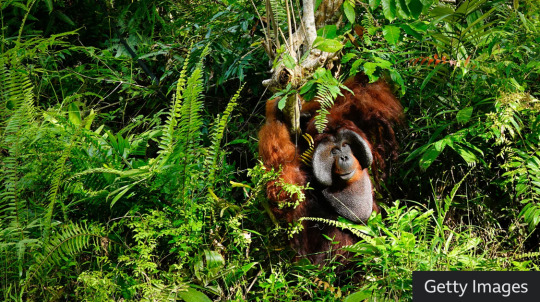
“[An archipelago in the Indian ocean] experienced a major whale comeback after signing up to a debt for nature swap[….] In Sri Lanka's capital of Colombo, local efforts have transformed what was once a rubbish dump to a wetland teeming with [wildlife….]”
2. Louisville launches America’s first 100% electric garbage truck fleet

““These innovative EV collection trucks will fulfill our trash, compost and recycling needs, reduce noise pollution, and include larger windshields to increase each driver’s field of vision and lower greenhouse gas emissions[….]” [The trucks are equipped with] audible devices that alert nearby drivers and pedestrians to compensate for their quieter operations.”
3. How a nearly extinct crocodile species returned from the brink in Cambodia

“By the late nineties, [Siamese crocodiles] were thought to be extinct. […] Today there are about 1,000 Siamese crocodiles in the wild[….] The first crocodiles were reintroduced into the wild in 2012 and they have begun breeding in the wild: over a hundred eggs were discovered in the forests in July, the most so far.”
4. Before his death, this conservative combat veteran filmed a PSA advocating for his transgender son

““Eric [“a conservative South Carolina U.S. Army combat veteran and father of a transgender child”] believed in the importance of freedom for trans kids — the right to live authentically and without fear,” [his widow] said. “He saw this not as a political issue but as a human one, recognizing that every child deserves the chance to thrive and feel whole.”” [Curator’s note: obviously, utmost condolences to Eric’s family; I’m including this as good news because it’s impactful to see a respectable member of the political party more often known for transmisia instead publicly advocating for his son’s human - not just political - rights]
5. Azores to create largest Marine Protected Area in North Atlantic – and a 'blueprint' for the rest of the world

““The Azores’ waters are a hotspot for marine life, hosting a third of the world's whale and dolphin species,[…” and harbouring] “cold-water corals and sponge fields that act as nurseries and feeding grounds for countless species, from deep-sea sharks to commercially valuable fish stocks.””
6. ‘It’s a big lever for change’: the radical contract protecting Hamburg’s green space

“Citizen power forced Germany’s greenest city-state into a binding agreement balancing housing and nature[….] The authorities signed an agreement with the citizen’s initiative to protect 30% of Hamburg’s land area – 10% as untouchable nature reserves and 20% with a looser conservation status – and ensure the share of public green space in the city rises over time.”
7. Behind the Scenes at the Federal Bee Lab Powered by Native Plants
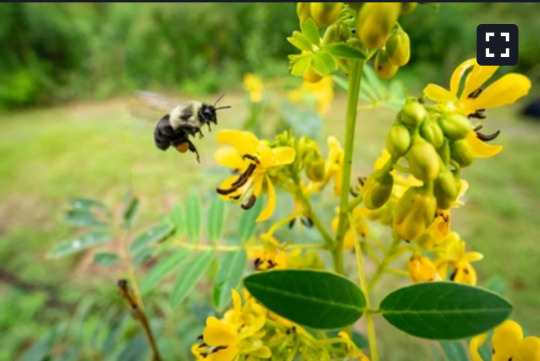
“Once native plants reappeared at the lab, he says, the impact was dramatic. In the first year, many of the region’s 200 native bee species arrived in droves. [… B]irds Droege had never before seen on the premises began to turn up to feed on the native plant seeds[….]”
8. Atlanta neighborhood hired case manager to address rising homelessness. It's improving health and safety for everyone

“Michael Nolan, an Intown Cares social worker, is trained in an approach that emphasizes individual autonomy and dignity, recognizes that being homeless is a traumatic experience, and prioritizes access to housing. [… H]iring a social worker has enabled East Atlanta Village to resolve conflicts gently, through conversation and negotiation.”
9. Loggerhead Sea Turtle Nests Make a Remarkable Comeback in Greece

“As long-lived and migratory species, [loggerheads] contribute to the health of seagrass beds and coral reefs, which are vital habitats for many marine organisms. Their nesting activities also contribute to beach ecosystems and help promote biodiversity.”
10. Rapid genome analysis of a Whippet sighthound sets new standard for biodiversity research

“[Scientists] have sequenced and analyzed the complete genome of a Whippet sighthound in less than a week. […] Rapid analysis is increasingly important for the conservation of endangered species, [… giving] insights into their biological relationships, evolution and adaptations to environmental conditions.”
October 15-21 news here | (all credit for images and written material can be found at the source linked; I don’t claim credit for anything but curating.)
#hopepunk#good news#conservation#wildlife#habitat#habitat restoration#electric vehicles#waste management#crocodiles#reptiles#conservatives#veterans#trans rights#protect trans kids#human rights#ocean#whale#dolphin#shark#coral reef#germany#native plants#native bees#bees#homelessness#homeless#unhoused#sea turtle#dogs#genetics
40 notes
·
View notes
Text
November 2024: This Week's Images


Perhaps the most abstract bee butt photo I've ever taken:


Garden production has slacked off but we're still getting a handful of tomatoes like this almost every day:

One of our next door neighbor's took down the two large oaks in their backyard. The upside is our garden will get more early morning sun. The downside is less habitat for backyard wildlife:

Look what I found today:

Cute little bugger:


#garden#backyard garden#flowers#rose#yellow rose#clematis#bee#honeybee#bee butt#homegrown#vegetables#tomatoes#trees#blue sky#loss of habitat#lizard#gecko#mediterranean house gecko#morning dew burning off#life in memphis#gardening#homegrown vegetables
4 notes
·
View notes
Text
youtube
Creating habitats that provide NYC's bees, butterflies, and birds with much-needed nourishment is is an important function of our gardens. How can these gardens also function as classrooms? The National Wildlife Federation helps create Schoolyard and Community Habitat gardens all over NYC. During this webinar, they teach you how to to create a habitat garden that cultivates curiosity, and offers an array of rich educational experiences.
Facilitated by Sarah Ward, National Wildlife Federation
Moderated by Mara Gittleman, NYC Parks GreenThumb
This webinar was part of 2021 Earth Week at GreenThumb, where we learned about and uplifted the ecological benefits of native plants in community gardens.
#NYC Parks GreenThumb#solarpunk#gardening#garden#habits#new york#new york city#USA#bees#butterflies#birds#plants#webinar#National Wildlife Federation#Schoolyard and Community Habitat gardens#habitat garden#Sarah Ward#Mara Gittleman#Youtube
11 notes
·
View notes
Text
You know what im genuinely surprised we don't have an episode about? Bees! Not even specifically honeybees! There are over 20,000 species of bees and I have been OBSESSED with them!
Did you know that 75% of wild bee species are ground nesters? That all worker honeybees are female? Or that African honeybees are actually hybrids? that there's a bee called the bumblebee-mimic digger bee that makes little sandcastles as nests? That there's bees that litterally air drop their eggs into the nests of other bees? That the majority of bees have special indents in their legs called "pollen baskets" that they use to carry little balls of pollen around while they fly?
I know they made a cameo in the flight of the polinators, and that the bros almost got vibe checked by them in the honey badger episode, but bees seriously deserve an entire episode dedicated to them specifically! Bees are one of the most interesting insects on the planet!
#wild kratts#bees#wild bees#btw when people say “save the bees” they really mean the many kinds of wild and/or solitary bees that are being threatened by habitat loss#yeah honeybees are fighting mites and all that but the other bees polinate just as if not more plants that they do!#the autism is autisming
14 notes
·
View notes